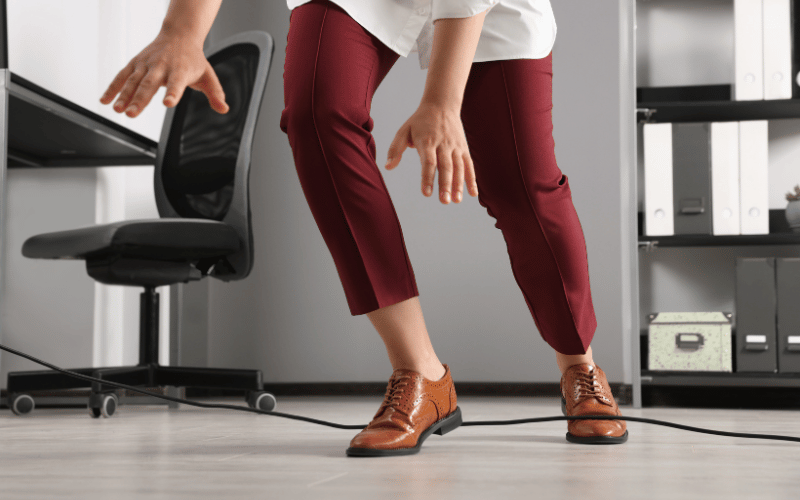Symptom 5: Difficulty with Balance and Coordination

Charcot Marie Tooth Disease (CMT) poses multifaceted challenges, with balance sitting prominently among them. Balance, a skill we often take for granted, emerges from a seamless fusion of various bodily functions. From sensory inputs like vision and touch to the muscles’ precise movements and our inner ear’s functionality – everything must harmonize. However, in individuals with CMT, this harmony gets disrupted. Muscle weakening, particularly in the lower limbs, inherently impairs the balance. But it’s not just muscular. The sensory deficits, primarily from the feet, deprive the brain of vital information about our environment, making stability even harder to achieve.
Alongside balance, coordination – the ability to move different parts of our body in a synchronized manner – gets compromised. It’s like a finely-tuned orchestra where every musician is slightly off-beat. This is especially pronounced in activities requiring footwork, such as dancing or sports. Individuals might find it increasingly challenging to execute complex motor tasks, which were once effortless. This isn’t just a mere inconvenience. Daily activities, from navigating stairs to avoiding obstacles on the pavement, can become daunting feats.
While the physical repercussions are evident, the emotional and psychological toll is profound. Balance and coordination issues can instill a persistent fear of falling. This fear, over time, might discourage many from venturing outdoors, leading to self-imposed isolation. Social events, particularly those that involve any form of physical activity, can become sources of anxiety. The once-joyful dance floor or the excitement of a hiking trail may now seem like intimidating challenges.
However, it’s not all gloom. Modern rehabilitation techniques offer rays of hope. Physical therapy, especially balance training exercises, can be immensely beneficial. Techniques like Tai Chi, known for enhancing balance, have shown promising results. Moreover, adaptive aids like stabilizing footwear or walking poles can provide that extra support, restoring confidence in one’s ability to navigate the world. With timely interventions, many individuals regain significant portions of their lost balance and coordination, leading to improved quality of life.
Acceptance and adaptation become the guiding stars. Recognizing one’s limitations while celebrating small victories can usher in a positive mindset. Joining support groups, sharing experiences with fellow CMT patients, and leaning into therapies can make a world of difference. While the path might seem challenging, human resilience coupled with medical advancements ensures that life with CMT, though different, can still be vibrant and fulfilling. (5)